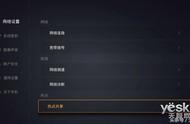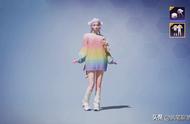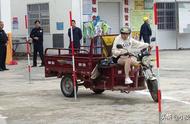二、重要句型或语法
四、读写重点
1、介词
本课侧重的是介词at、in、off和with的用法。如:
I'll see you at the station.
Let's go for a walk in the park.
The pencil rolled off the desk.
The man with long hair is supposed to be a poet.
【推荐阅读】
更多有关介词的用法,可参考下面的文章:
2、make和let
本课侧重的是make和let作为使役动词的用法。如:
I can't make him change his mind.
Don't let the children touch anything in this room please.
【推荐阅读】
有关更多有关make和let的用法,可参考下面的文章:

| A woman in jeans stood at the window of an expensive shop. | 1)in 衣服,表示穿着...衣服。注意对比“in 颜色”,表示穿着什么颜色的衣服。 2)at the window of,在...窗边。 |
| Though she hesitated for a moment, she finally went in and asked to see a dress that was in the window. | 1)though,尽管、虽然。引导的是让步状语从句。 2)hesitate,犹豫。其名词形式为hesitation。 3)that引导的是定语从句,修饰先行词a dress。 |
| The assistant who served her did not like the way she was dressed. | 1)who引导的是定语从句,修饰先行词the assistant。 2)serve sb.,为某人服务、接待某人。 3)注意she was dressed其实是定语从句,用来修饰先行词the way,she前省略了in which。 4)be dressed,穿着。 |
| Glancing at her scornfully, he told her that the dress was sold. | 1)Glancing at her scornfully,属于现在分词短语用作伴随状语的用法。 2)glance at sb.,扫了或瞥了某人一眼。 3)scornfully,轻蔑地。该词源自名词或动词scorn(蔑视、轻视)。 |
| The woman walked out of the shop angrily and decided to punish the assistant next day. | 1)walk out of....,走出某地。 2)punish,惩罚。 3)next day,第二天。也可以表达为the next day。 |
| She returned to the shop hte following morning dressed in a fur coat, with a handbag in one hand and a long umbrella in the other. | 1)return to,回到某地。 2)the following morning,第二天早上。 3)dressed in a fur coat,过去分词用作伴随状语。 4)with a handbag in one hand and a long umbrella in the other,这是with引导的独立主格结构(with 名词 介词短语),用作伴随状语。 |
| After seeking out the rude assistant, she asked for the same dress. | 1)seek out,挑出、找出。 2)ask for,请求、要求。 |
| Not realizing who she was, the assistant was eager to serve her this time. | 1)not realizing...,现在分词短语用作伴随状语。注意这种情况下,现在分词短语的否定形式是在doing前加not。 2)who引导的是realizing的宾语从句。 3)be eager to do,渴望做某事。 |
| With great difficulty, he climbed into the shop window to get the dress. As soon as she saw it, the woman said she did not like it. | 1)with great difficulty,费了好大劲儿。用作方式状语。 2)注意句中用了climbed into the shop window,说明店员的确费了很大劲儿才够着裙子,从而凸显了店员的谄媚样儿。 3)注意第二句中说到,当女士看到店员爬进橱窗后,马上又说自己不喜欢那条裙子,报复的心理终于得到满足了。 |
| She enjoyed herself making the assistant bring almost everything in the window before finally buying the dress she had first asked for. | 1)enjoy oneself doing,开心得做某事。 2)make sb. do sth.,让某人做某事。注意make sb.后面接动词时,不能接to do的用法。但除了make sb. do sth.之外,也可以用make sb. doing/done的用法。 3)before finally buying...,before后面直接接了doing,其实是省略了相同的主语she,其原形应该是:before she finally bought...。 4)she had first asked for用作定语从句,修饰先行词the dress,中间省略了关系代词that或which。 |

四、读写重点
注意本课中出现了多出现在分词或过去分词或介词短语用作伴随状语的用法,这在写作中可以起到简化句子结构的作用,可以就此进行专门的训练。

可介绍基本的社交礼仪。















